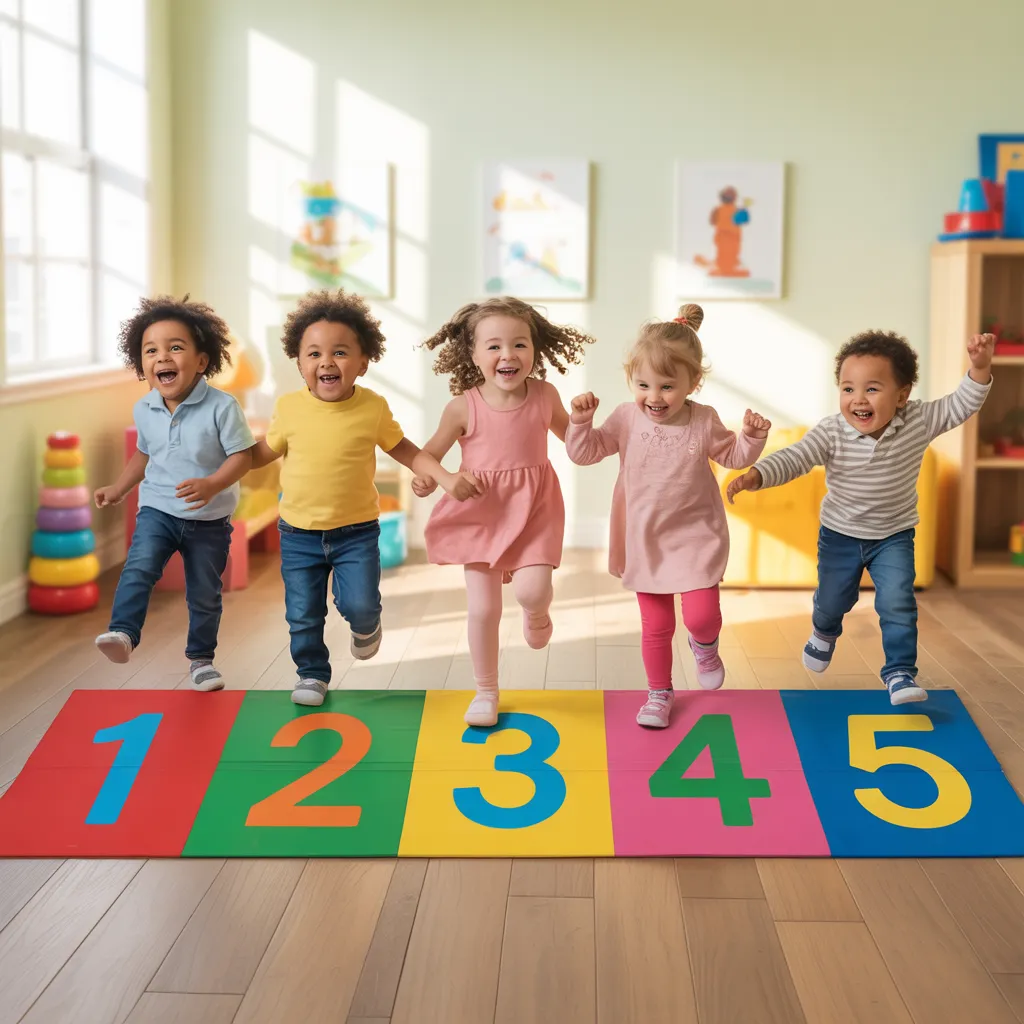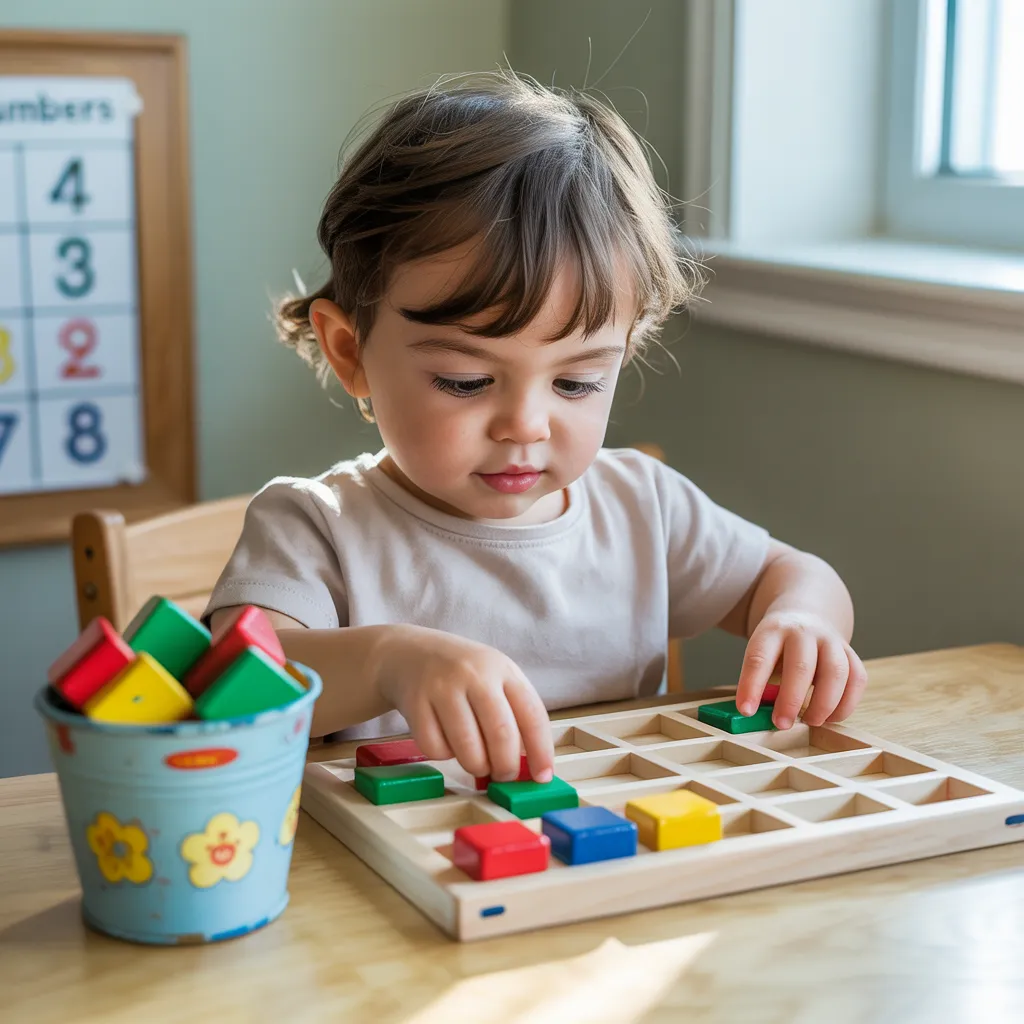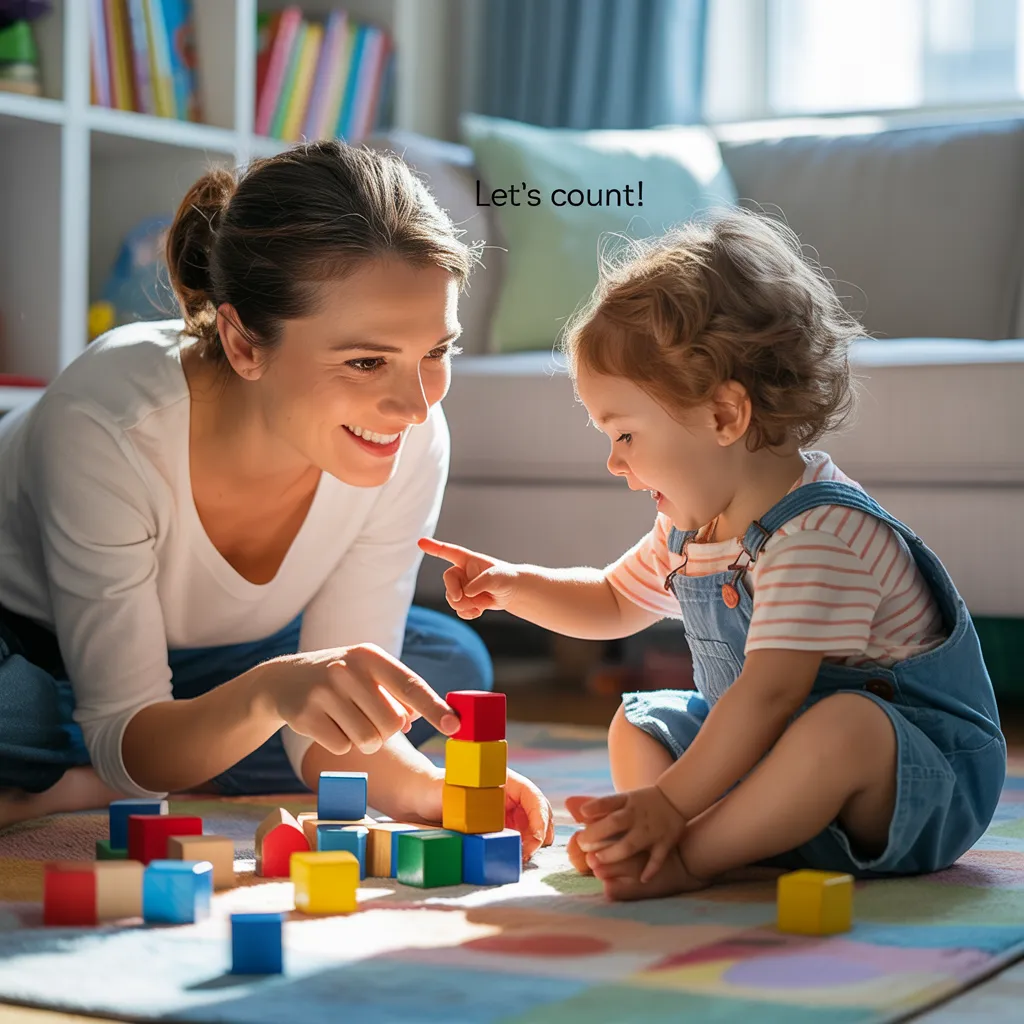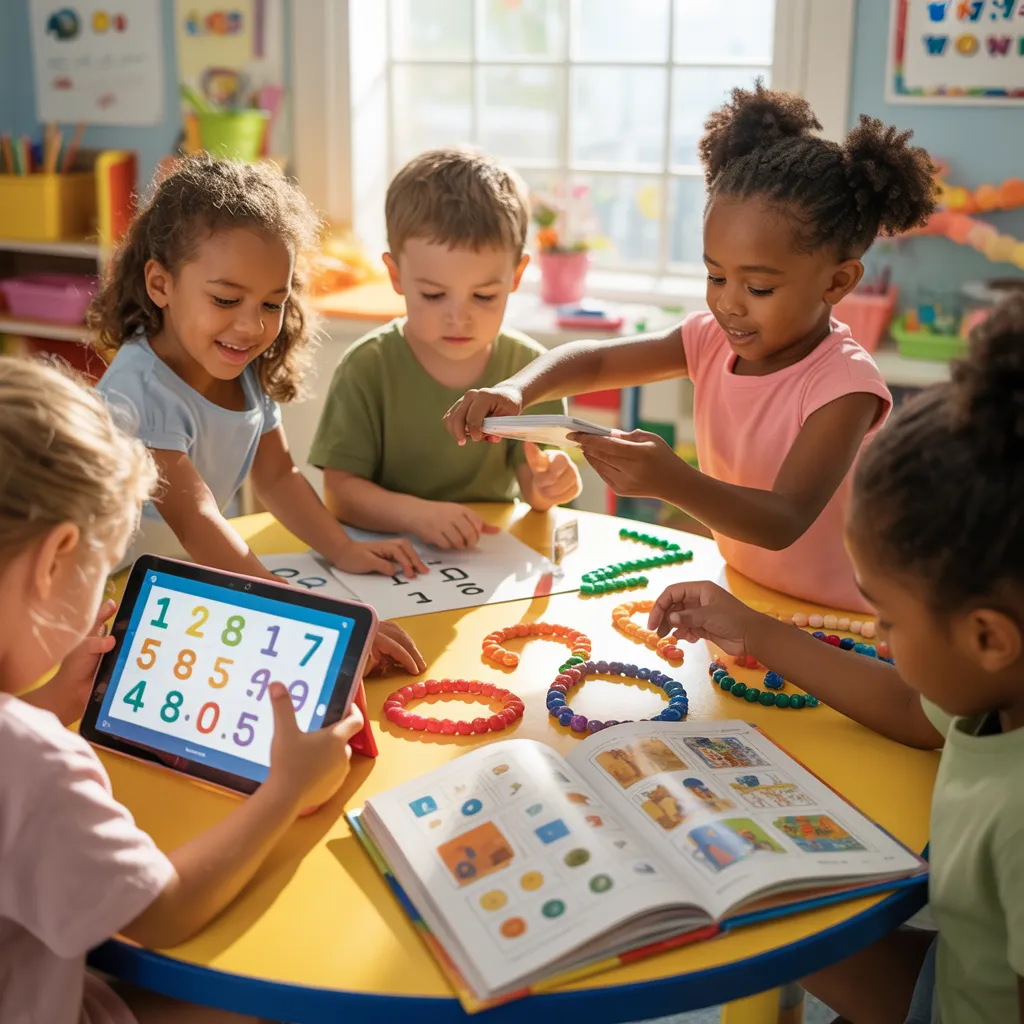The journey of teaching a child to count is filled with excitement, challenges, and wonderful moments of discovery. As parents and educators, we witness the remarkable transformation as children move from simply reciting numbers in sequence to truly understanding what those numbers represent. Learning how to teach kids to count effectively means recognizing that counting is far more complex than it might initially appear.
True counting involves several interconnected skills: recognizing number symbols, reciting numbers in order, understanding that the last number counted represents the total quantity (known as cardinality), and grasping that each object should be counted exactly once. These foundational math concepts don’t develop overnight but rather evolve through playful exploration, daily practice, and patient guidance.
By incorporating counting naturally into everyday activities and creating engaging learning experiences, we can nurture children’s numerical understanding while fostering a positive attitude toward mathematics. This article explores proven strategies that make teaching counting both effective and enjoyable, setting children on a path toward mathematical confidence and competence.

Understanding the Developmental Stages of Counting
The Natural Progression of Counting Abilities
Children follow a relatively predictable path as they develop counting skills, though the timing varies for each child. Understanding these stages helps us provide appropriate counting activities at the right time. The counting journey typically begins with rote counting – the ability to recite numbers in order without necessarily connecting them to quantities. You’ll hear toddlers proudly counting « one, two, three… » often skipping numbers or repeating them in an inconsistent sequence.
From there, children progress to rational counting, where they start matching each number word to an object (one-to-one correspondence). This crucial development usually occurs between ages 2-4, and you’ll notice children deliberately touching or pointing to objects as they count them. The next significant milestone comes when children understand cardinality – recognizing that the last number they say represents the total quantity in the group. For example, when counting five blocks, they understand that « five » isn’t just the last word they said but represents the total number of blocks.
As children continue to develop, they begin to understand conservation of number – knowing that the quantity remains the same regardless of how objects are arranged. For instance, five cookies spread out in a line are still five cookies when grouped closely together. This understanding typically solidifies around age 5-6 and represents a significant leap in mathematical thinking.
Recognizing When Your Child Is Ready for Counting Instruction
Children demonstrate their readiness for formal counting instruction through various behaviors and interests. Look for signs like spontaneously counting objects during play, showing interest in numbers in their environment (such as on clocks or books), or asking questions about quantities (« How many cookies do I have? »).
Many children begin showing interest in counting between 18 months and 3 years of age, starting with simple rote counting. By ages 3-4, most children are ready for more structured counting activities that focus on matching numbers to objects. Remember that each child develops at their own pace, and forcing counting concepts before a child shows interest or readiness can create unnecessary frustration.
The key is to follow your child’s lead and provide opportunities for counting within contexts that interest them. If they love cars, count cars together. If they enjoy helping in the kitchen, count ingredients as you cook. By building on their natural curiosity, you’ll create positive associations with counting that will serve as motivation for continued learning.
Essential Strategies for how to teach kids to count

Make Counting Part of Everyday Activities
One of the most effective ways to teach counting is by integrating it naturally into daily routines and activities. The beauty of this approach is that it requires no special materials and helps children understand the practical importance of counting in real life. During mealtimes, count pieces of food as you serve them: « Let’s count how many carrot sticks you have – one, two, three, four! » While dressing, count clothing items: « You have two shoes, let’s put them on. One shoe, two shoes! »
Shopping trips offer countless opportunities for counting practice. Ask your child to put three apples in the bag or count how many boxes of cereal are on the shelf. At bedtime, count the steps as you climb the stairs or the number of stuffed animals on the bed. These natural counting moments throughout the day reinforce the skill without feeling like formal instruction.
This approach is particularly effective because it demonstrates the authentic purpose of counting in everyday life. Children quickly learn that counting isn’t just an abstract exercise but a useful tool that helps us navigate our world. The repetition across different contexts also helps cement the concept while keeping the learning experience varied and engaging.
Use Manipulatives and Visual Aids
Concrete objects that children can touch, move, and manipulate are invaluable tools when teaching counting. These tangible items, often called manipulatives, help make abstract number concepts visible and interactive. Common household items make excellent counting manipulatives: blocks, buttons, small toys, stones, or cereal pieces can all serve as counting objects.
When using manipulatives, encourage your child to physically move each item as they count it. This tactile approach reinforces one-to-one correspondence and helps prevent common counting errors like skipping objects or counting the same object twice. For a more structured approach, create a counting tray by placing a set number of objects on a plate or tray and ask your child to count them, moving each one as they go.
Visual aids like number cards with corresponding dot patterns help children connect the number symbol (3) with its quantity (•••). Ten frames—simple grids with ten spaces that can be filled with counters—are particularly effective for developing number sense, as they help children visualize numbers in relation to five and ten. These tools create a mental bridge between abstract numerals and the quantities they represent, strengthening conceptual understanding that will benefit children throughout their mathematical journey.
Engaging Games and Activities for Counting Practice

Fun Counting Games That Kids Love
Games provide the perfect disguise for counting practice, turning learning into an enjoyable experience that children eagerly participate in. Board games that involve moving pieces along a numbered path, like Chutes and Ladders, naturally incorporate counting as players move their tokens. Dice games are particularly valuable as they combine number recognition with counting, and the element of chance adds excitement.
« Count and Catch » is a simple yet effective active game where you call out a number and toss that many beanbags or soft balls for your child to catch and count. « Counting Scavenger Hunts » add adventure to counting practice—create simple clue cards like « Find 3 red things » or « Collect 5 small toys » and watch as your child eagerly counts their treasures.
Card games offer versatile counting practice too. Using a standard deck, play « Count and Match » where players turn over a card and count out that many objects. For younger children, create simple counting card games using index cards—write a numeral on one card and draw the corresponding number of dots on another, then have children match them.
The social interaction and joyful atmosphere these games create help form positive associations with counting and math. When children are having fun, they’re more engaged and more likely to absorb the mathematical concepts being practiced, often without even realizing they’re learning.
Creative Arts-Based Counting Activities
Art activities provide a wonderful medium for reinforcing counting skills while engaging children’s creativity and fine motor development. « Counting Collages » invite children to glue a specific number of items (buttons, pasta shapes, stickers) onto paper, perhaps creating a number-shaped outline to fill. This activity combines counting practice with artistic expression and strengthens fine motor skills.
« Musical Counting » adds rhythm to number learning—sing counting songs like « Five Little Monkeys » or « Ten in the Bed » with corresponding finger plays or movements. The rhythmic patterns in music help children remember number sequences, and the movements reinforce one-to-one correspondence as they raise one finger for each number.
For a multisensory approach, try « Playdough Numbers »—children can roll playdough snakes to form numerals or create a specified number of playdough balls. This tactile experience helps cement number concepts while developing hand strength needed for writing. « Counting Stamps » activities, where children stamp a designated number of images onto paper, combine counting practice with the satisfaction of creating patterns and images.
These arts-based activities appeal to different learning styles and offer children multiple pathways to understanding counting concepts. The creative component makes the learning process more engaging and meaningful, helping numbers come alive through artistic expression.
Technology and Resources for Teaching Counting

Effective Apps and Digital Tools for Counting Practice
In today’s digital world, technology offers engaging ways to supplement traditional counting instruction. Quality educational apps and digital tools can provide interactive experiences that reinforce counting concepts through animation, sound, and immediate feedback. Look for apps that focus on more than just rote counting—the best options encourage one-to-one correspondence and help children understand the connection between numerals and quantities.
Apps like « Todo Math » and « Moose Math » offer game-based activities specifically designed to develop early counting skills and number sense. Interactive storybook apps such as « Counting Bears » combine narrative with counting challenges, making learning contextual and meaningful. Many of these digital resources adapt to your child’s progress, providing appropriate challenges as their skills develop.
When selecting digital counting tools, prioritize those that encourage active participation rather than passive watching. The most effective apps require children to count objects by physically touching them on the screen, reinforcing one-to-one correspondence in a digital environment. While technology should never replace hands-on counting experiences with real objects, thoughtfully selected digital tools can provide valuable practice and keep children motivated through engaging graphics and interactive elements.
Books and Printable Resources That Support Counting
Literature offers a delightful way to explore counting concepts within meaningful contexts. Counting-themed picture books like « Ten Black Dots » by Donald Crews, « Fish Eyes » by Lois Ehlert, or « How Do Dinosaurs Count to Ten? » by Jane Yolen incorporate numbers into engaging stories that capture children’s imagination. Reading these books together provides natural opportunities to count objects on the page and discuss number concepts.
Printable counting worksheets and activities can be found online to supplement learning. Look for materials that balance skill practice with engagement—connect-the-dots activities that follow numerical order, color-by-number pages that reinforce number recognition, or counting mats that provide a structured space for placing and counting objects.
Create a designated « Math Corner » in your home with these resources readily available, along with counting manipulatives and number cards. This dedicated space signals to children that math is a valued activity and provides easy access to materials for spontaneous counting practice. The combination of literature and targeted printable resources creates a rich learning environment that approaches counting from multiple angles, reinforcing concepts through diverse, complementary experiences.
How to Support Struggling Counters
Identifying Common Counting Difficulties
Children may encounter various challenges as they learn to count, and recognizing these difficulties early allows for targeted support. One common issue is the « stable order principle »—consistently reciting numbers in the correct sequence. If a child regularly skips numbers or mixes up the order, they may need additional practice with the basic number sequence before focusing on counting objects.
Another frequent challenge involves one-to-one correspondence—matching one number word to exactly one object. You might notice a child counting too quickly and assigning multiple number words to a single object, or skipping objects entirely. Some children struggle with cardinality, not understanding that the last number counted represents the total quantity. They might correctly count « 1, 2, 3, 4, 5 » but when asked « how many? » immediately afterward, they start counting again instead of answering « five. »
Spatial arrangement can also cause difficulties—some children can only count objects arranged in a straight line and become confused when items are in a circle or scattered randomly. Watch for these signs of confusion and adjust your approach accordingly, providing targeted support for the specific principle that’s challenging for your child.
Tailoring Your Approach for Different Learning Styles
Children learn in diverse ways, and adapting your counting instruction to match your child’s preferred learning style can dramatically improve their progress. Visual learners benefit from clear demonstrations, number cards with pictures, and watching counting videos. Provide these children with organized, visually appealing counting materials and use color-coding to highlight patterns and relationships.
Auditory learners thrive when counting is set to music or rhythm. Counting songs, rhymes, and verbal games help these children internalize number sequences and concepts. Read counting books aloud with expressive voices and encourage them to talk through their counting process, verbalizing each step.
Kinesthetic and tactile learners need movement and touch. Incorporate counting into physical activities—jump while counting, hop from one numbered floor tile to another, or use whole-body movements to represent quantities. These children especially benefit from textured number cards, counting manipulatives they can handle, and activities that allow them to physically move objects as they count.
By observing how your child naturally engages with learning materials and adapting your approach accordingly, you can create a more effective and enjoyable counting experience that works with their inherent learning preferences rather than against them.
Advanced Counting Concepts to Introduce Gradually
Moving Beyond Basic Counting: Skip Counting and Counting Backward
Once children have mastered basic counting, introducing more advanced counting patterns expands their number sense and prepares them for multiplication and division concepts. Skip counting—counting by numbers other than one—builds flexibility with number sequences and helps children recognize patterns in our number system. Start with counting by twos, using pairs of objects like socks, shoes, or hands to provide visual support. Progress to counting by fives and tens, which helps children understand place value and prepares them for money concepts.
Counting backward develops mental flexibility and lays groundwork for subtraction. Begin with small numbers, counting down from five while doing a fun activity like launching a toy rocket. Gradually increase the starting number as children become more confident. Visual supports like number lines or counting down fingers can help make reverse counting more concrete.
These advanced counting patterns should be introduced playfully and without pressure. Games like « Hop By Twos » (where children physically hop along a number line counting by twos) make these concepts tangible and fun. Everyday situations provide natural practice opportunities—count backward while waiting for something (« We’ll start in 10 seconds: 10, 9, 8… ») or skip count items that naturally come in groups, like eggs in a carton.
Connecting Counting to Addition and Subtraction Concepts
As children become confident counters, you can gently introduce the connection between counting and basic operations. « Counting on » is a natural bridge to addition—when adding small numbers, children can start with the larger number and count on the additional amount. For example, to solve 5 + 3, they start with « 5 » and count on three more: « 6, 7, 8. »
Simple story problems make these connections meaningful: « You have 4 crackers, and I give you 2 more. How many do you have now? » Encourage your child to use objects to represent and solve the problem, counting the total. Similarly, subtraction can be introduced through « counting back » or « taking away » scenarios with physical objects.
Visual representations help solidify these relationships—ten frames, number lines, and simple groupings of objects allow children to see how numbers can be combined or separated. Building and breaking apart small numbers helps develop number sense: « Show me 5 blocks. Now show me how you could make 5 using 2 groups of blocks. » This exploration of number composition lays groundwork for more formal addition and subtraction instruction later.
The key is maintaining a playful, exploratory approach that builds on children’s natural curiosity about numbers. These advanced concepts should feel like natural extensions of counting rather than completely new mathematical territory. how to teach kids to count
Conclusion
Teaching a child to count is truly one of the most rewarding educational journeys you’ll experience together. As we’ve explored throughout this article, effective counting instruction goes far beyond simply helping children memorize number words. It involves guiding them through a developmental progression that builds true number sense—the ability to understand what numbers mean, how they relate to quantities, and how they can be manipulated in our everyday world.
The most successful approach to teaching counting combines structured learning opportunities with playful, everyday experiences. By integrating counting naturally into daily routines, providing hands-on experiences with manipulatives, engaging children through games and creative activities, and utilizing thoughtfully selected resources, you create a rich mathematical environment that supports comprehensive counting development. how to teach kids to count
Remember that each child progresses at their own pace, and patience is essential. Celebrate small victories, maintain a positive attitude toward mathematics, and focus on making the learning experience enjoyable. By establishing this strong foundation in counting, you’re not just teaching a discrete skill—you’re nurturing a confident mathematical thinker who is prepared for future academic success and equipped with an essential life skill. how to teach kids to count
15 Essential Counting Worksheets for Preschool: Building a Strong Foundation for Math Success
FAQ
At what age should I start teaching my child to count? how to teach kids to count
Children typically begin showing interest in counting between 18 months and 3 years old. Start with informal counting experiences as soon as your child shows curiosity about numbers. For most toddlers, this means simple rote counting (reciting numbers in order) and counting small sets of objects during everyday activities. By ages 3-4, most children are ready for more structured counting activities that build one-to-one correspondence. Remember that development varies widely among children—follow your child’s lead and introduce counting concepts through play rather than formal instruction for young children. how to teach kids to count
My child can recite numbers but doesn’t seem to understand what they mean. How can I help?
This is a common stage in counting development! Your child has mastered rote counting but needs support developing one-to-one correspondence and cardinality. Focus on activities that connect number words to physical objects. Have your child touch each item as they count it, moving it to the side to keep track. Use smaller quantities (3-5 objects) initially, and only increase when they demonstrate understanding. Ask « how many? » after counting and emphasize that the last number tells the total. Games like « Grab and Count » (grabbing a handful of small objects and counting them) provide practice connecting numbers to quantities in a fun way. Consistency and patience are key—this conceptual understanding typically develops between ages 3-5. how to teach kids to count
What should I do if my child gets frustrated during counting activities?
First, step back and reduce pressure. If counting becomes stressful, it can create negative associations with math that may persist. Shorten activities, use smaller numbers, or take a break entirely for a few days. When you resume, follow these strategies: ensure activities match your child’s developmental level (they may not be ready for the current challenge); incorporate their interests to increase engagement; model a positive attitude toward mistakes (« Oops, I skipped a number! Let me try again »); break skills into smaller steps; and end each session with something simple they can succeed at to build confidence. Most importantly, keep the atmosphere playful—counting should feel like an enjoyable exploration, not a performance or test. how to teach kids to count
How can I help my child who consistently skips numbers when counting?
Consistent number-skipping often indicates that your child hasn’t yet developed a stable mental representation of the counting sequence. Strengthen this through rhythmic activities—singing counting songs, chanting numbers while clapping, or bouncing a ball for each number creates a memorable pattern. Number lines and visual sequences provide helpful reference tools. Try the « Missing Number » game—count aloud but occasionally whisper a number, encouraging your child to identify the whispered number. For kinesthetic reinforcement, create a physical number line with paper plates or stepping stones and have your child physically jump from number to number while counting. Consistent, brief practice sessions (3-5 minutes several times daily) are more effective than occasional longer sessions for establishing the standard number sequence. how to teach kids to count
When should I expect my child to master counting to 100?
Most children can count to 100 by the end of kindergarten (around age 6), though this timeline varies significantly. Children typically master counting to 10 by age 4, to 20 by age 5, and gradually extend their counting range throughout the early elementary years. Focus on conceptual understanding rather than arbitrary counting milestones—a child who can count to 20 with true understanding of cardinality and one-to-one correspondence has stronger number sense than one who can recite to 100 without grasping what the numbers represent. Pattern recognition helps with larger numbers—once children understand the repeating structure of our base-10 system (the twenties follow the same pattern as the teens, etc.), counting to higher numbers becomes easier. Support this pattern recognition by pointing out similarities: « We say ‘twenty-one, twenty-two’ just like we say ‘thirty-one, thirty-two.' » how to teach kids to count

Ping : 15 Powerful Number Recognition Games That Transform Early Math Skills - smartkidsprintable